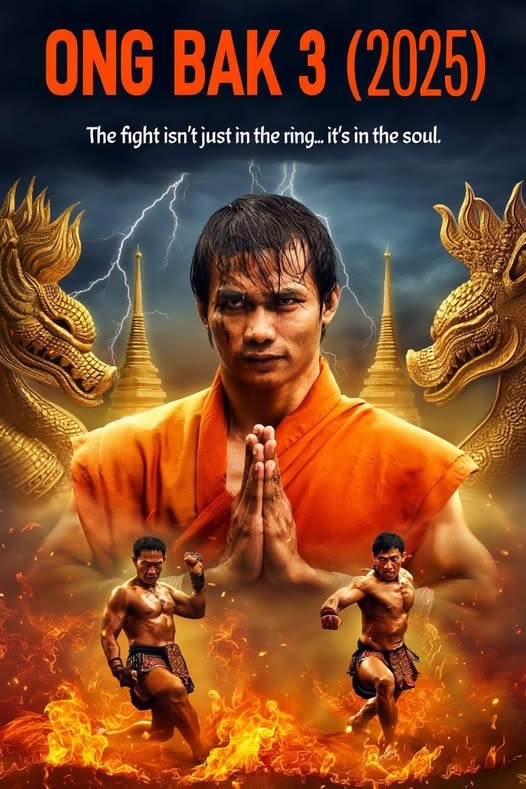🔥 Ong Bak (2025) – The Fight Within the Soul 🔥

Muay Thai isn’t just returning to the screen — it’s resurrecting with spiritual fire. Ong Bak (2025) is not merely a continuation of Tony Jaa’s legendary saga; it’s a meditation on pain, redemption, and the human spirit’s eternal battle between chaos and peace.

From the very first frame, the film breathes with thunder — temples glowing under storm-lit skies, drums echoing like a heartbeat from centuries past. Tony Jaa’s return feels both triumphant and haunting, as if the warrior we once knew has aged not in years, but in wounds and wisdom. His fists no longer just break bones — they carry prayers, each strike whispering to forgotten gods.
The choreography here is pure poetry. Every movement, every kick, every knee strike is charged with purpose. But what separates Ong Bak (2025) from its predecessors is not its ferocity, but its faith. The violence becomes ritual, the fight a sacred language of emotion. Tony Jaa’s body tells stories words cannot — of guilt, of transcendence, of finding light through suffering.

Between the clashes and chants, there lies silence — sacred, heavy silence. Director’s vision (though grounded in realism) allows mysticism to bloom at the edges: shimmering spirits, echoes of ancestors, karma woven into the air. You can almost feel the pulse of the land, ancient and restless, as destiny itself becomes a spectator to this man’s internal war.
Jaa’s portrayal of Tien feels stripped bare. Gone is the unbreakable hero of the past; in his place stands a man cracked open by time, wrestling not with enemies but with his own reflection. His eyes carry the weight of unspoken losses. When he bows before the Buddha statue after a battle, blood mixing with rain, it’s not victory — it’s surrender to something greater.
The cinematography is breathtaking. Sweeping aerial shots of temples in monsoon light contrast with claustrophobic close-ups where sweat, dust, and soul collide. The duality of rage and peace is captured visually — orange torchlight dancing against cool moonlight, a metaphor for the struggle within every warrior.

The soundtrack fuses ritual drums with modern percussion, giving each scene the pulse of both prayer and war. It’s hypnotic, primal, and deeply human. The rhythm doesn’t just accompany the action — it is the action, merging sound and motion into one spiritual heartbeat.
While Ong Bak (2025) delivers jaw-dropping martial artistry, its true strength lies in its vulnerability. This is not a film about victory or vengeance. It’s about awakening — realizing that the fiercest opponent we face lives within us. Jaa embodies that truth with quiet ferocity, proving once more why he remains the soul of Muay Thai cinema.
In the final act, when Tien steps into the sacred circle for one last fight — no audience, no glory, only karma — it feels less like a climax and more like enlightenment. The fists slow, the breathing steadies, and we understand: the true battle has never been external.
Ong Bak (2025) reminds us that warriors don’t fight for crowns or cheers. They fight to silence the storm within, to find meaning beyond survival. It’s a story of fists and faith, of pain that purifies, of violence turned into meditation.
Because in the end, the greatest victory… is peace.
Related movies:











